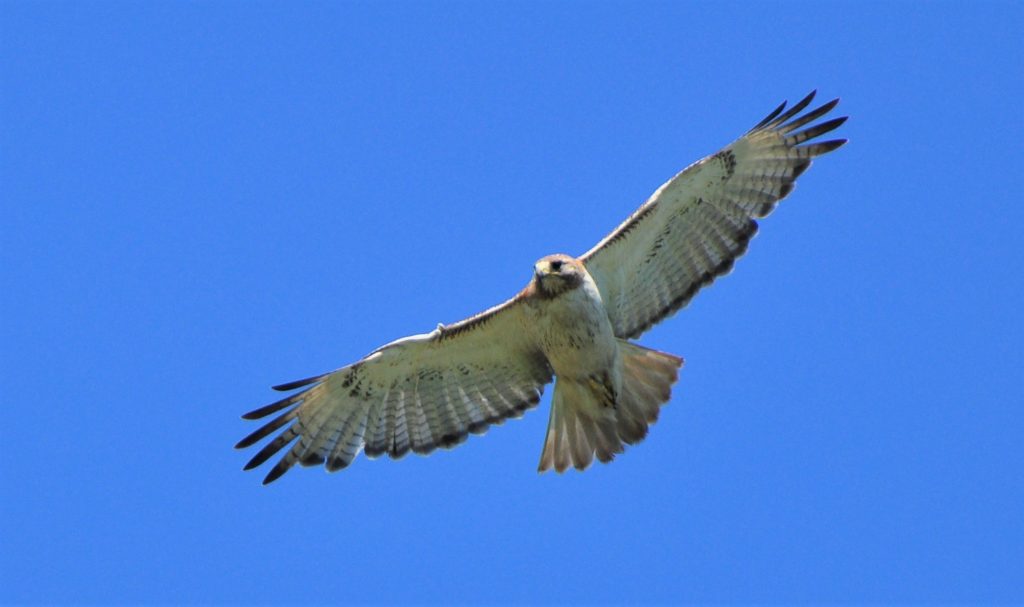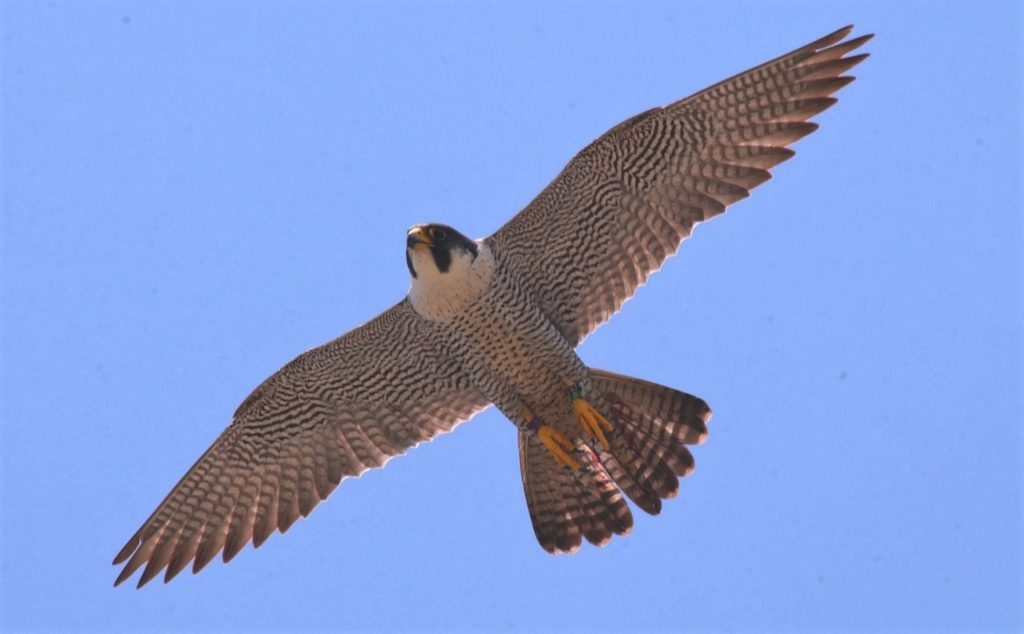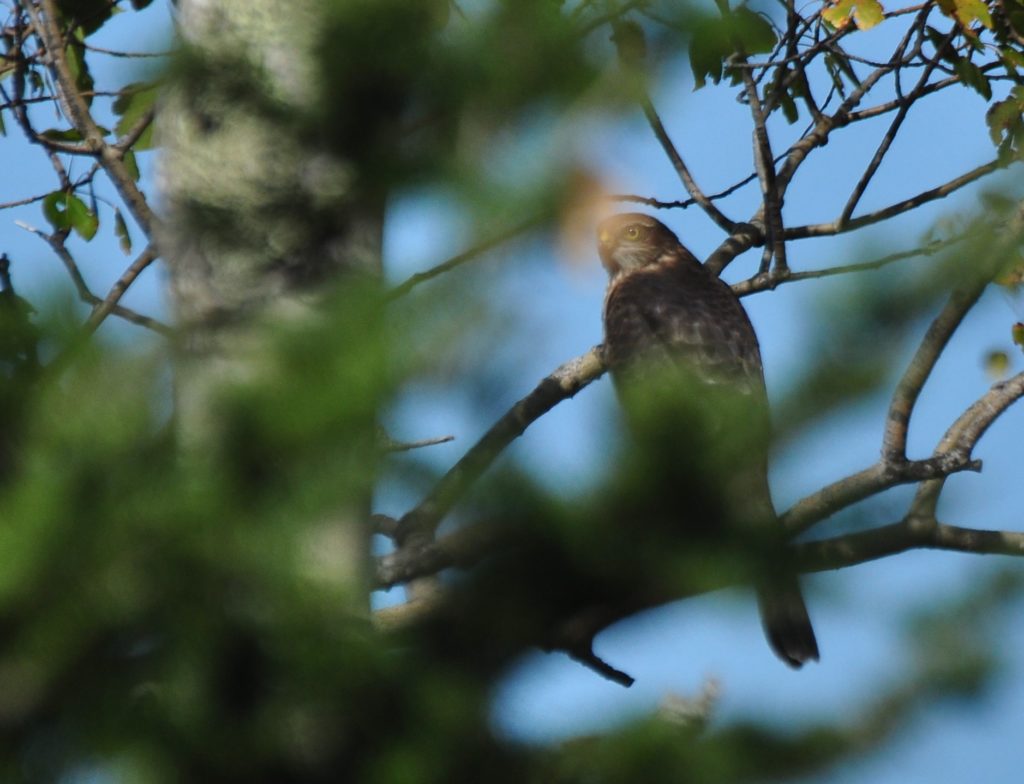Photography courtesy of Lowell Washburn, all rights reserved.
DULUTH, MN. — In the dense evergreen forests of America’s North Country, the fall raptor migration is gathering a full head of steam. Pouring down from Canada, the flight includes birds of prey of all shapes and sizes from tiny kestrels to gargantuan twelve-pound golden eagles. Although the grand passage can be viewed from a variety of locations, there is no better place to witness this World Class spectacle than at the famous Hawk Ridge region of Lake Superior.

Lake Superior is the world’s largest freshwater lake. Roughly the size of Austria, the lake contains enough crystal-clear liquid to entirely cover all of North America and all of South America with a foot of water.
Birds of prey are hesitant to cross large expanses of water – especially those that are too big to see across. With a length of 350 miles and maximum width of 160 miles, it’s no wonder that migrating birds would rather go around than go across Superior’s watery expanse.
For birds streaming southward, Lake Superior represents the Mother of all Roadblocks. When encountering the lake’s intimidating northern shoreline, most bird species – hawks or otherwise — execute an abrupt right turn. It’s a detour that redirects migrating hawks and other birdlife down the lake’s angling shoreline in daunting abundance. Located near the southwest tip of this inland ocean, the Hawk Ridge Bird Observatory is a place like no other. More than 20 species of raptors have been observed at the site; and annual counts may reach or exceed 100,000 birds. Visit on a day with clear skies and the right winds, and you’ll witness a fall migration that must be seen to be believed.

Although a few traveling hawks may be sighted shortly after daybreak, the main event will occur later. By mid-morning, more and more raptors will appear as warming air and rising thermals provide enhanced lift. The number of birds steadily increases as eagles, red-tails, osprey, Cooper’s hawks, vultures, broad-wings, kestrels, sharp-shins, and others make their appearance. Drifting with the wind, birds continue to stack up overhead as hawks and eagles use rising air currents to soar to heights beyond the range of 10-power binoculars. It’s an amazing sight.
When I visited the area during late September of 2018, the Observatory’s official migration counts were running as high as 2,500 raptors per day. A few miles up the lakeshore near Two Harbors, I observed a nonstop parade of raptors consisting of several hundred hawks, eagles, and falcons. The flight included hundreds of migrating merlins – more merlins in a single afternoon than I’m likely see in Iowa during the rest of my life.

When I returned to the area late last week, this year’s aerial show was stolen by a never-ending display of migrating sharp-shinned hawks. Scarcely larger than a jay, sharp-shins originate in the coniferous forests of southern and central Canada and are characterized by long tails, short wings, and exceedingly swift flight. Feeding almost exclusively on other birds, these faster than lightning hawks prey on juncos, sparrows, thrushes, and doves. During migration, they often skim low over cattail beds to conduct surprise attacks on shorebirds feeding atop exposed mudflats. Sharp-shins are one of the most commonly observed raptors during autumn Hawk Watches. The Observatory record for the species occurred in 2017 when more than 2,500 passing “sharpies” were counted in a single day.


 Tom Cope
Tom Cope Sue Wilkinson
Sue Wilkinson Susan Judkins Josten
Susan Judkins Josten Rudi Roeslein
Rudi Roeslein Elyssa McFarland
Elyssa McFarland Mark Langgin
Mark Langgin Adam Janke
Adam Janke Joe Henry
Joe Henry Kristin Ashenbrenner
Kristin Ashenbrenner Joe Wilkinson
Joe Wilkinson Dr. Tammy Mildenstein
Dr. Tammy Mildenstein Sean McMahon
Sean McMahon